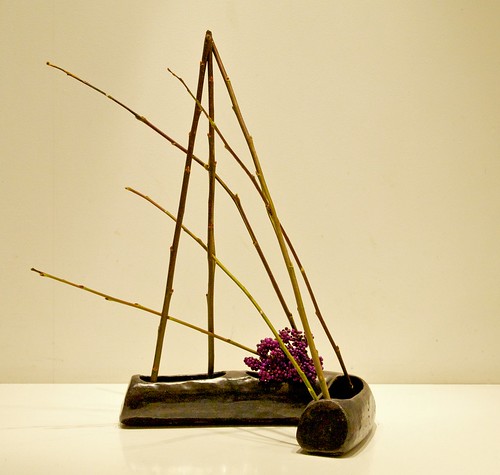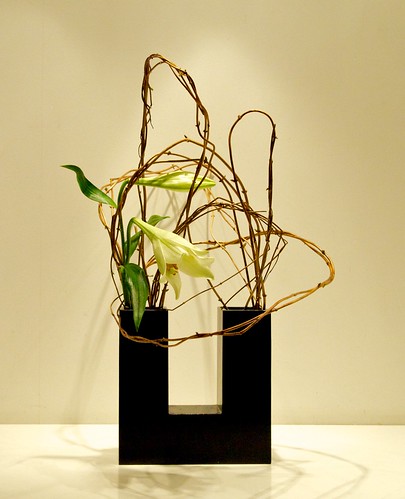Goat Willow and Japanese Beauty Berries in a ceramic container.
Abstract freestyle.
The days have turned cold - much colder than usual in November. Plants are withering. Flowers are gone. Still winter can be a good season for ikebana. The trees are bare and the branches have to face winter naked. On the bright side, all the straight and curved lines of the tree branches are clearly visible against the sky when there are no leaves to cover them. At last we can see them as they are, and in all their variety.
The founder of the Sogetsu school, Sofu Teshigahara has said this about branches and lines:
"Branches consist mainly of lines, both necessary and superfluous.
In order to emphasize the necessary lines,
you have to discard all the superfluous and conflicting ones."
"One should study how to contrast the sense of stillness with movement
using a combination of curved and straight lines."
In the winter, when branches aren't that easy to bend, one will have to cooperate with the material and chose carefully what parts to use. The two arrangements in this post are variations on the theme "intertwining". In the first I have used Goat Willow branches, straight and slightly curved lines. The thin branches are fixed by sticking them through splits in the thicker ones (the intertwining). The second arrangement has a more naturalistic form and uses strongly curved lines. Vines of Honeysuckle are intertwined into a swirling three dimensional shape. The wooden vase has straight lines that contrast the curved ones.
Quotations from:
Kadensho: The book of flowers
by Sofu Teshigahara
Sogetsu Shuppan, Tokyo, 1979














1 comment:
I was inspired by your intertwining study here and tried it out in my latest freestyle arrangement. I haven't finished photographing the arrangement, but when I do, I will swing by to let you know. Today's blog post is the start of my "blog tour" and your lovely blog is among the first stops. Thank you for being a source of inspiration to me in my own ikebana studies. Keep blogging!
Post a Comment